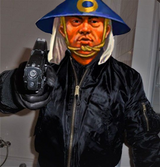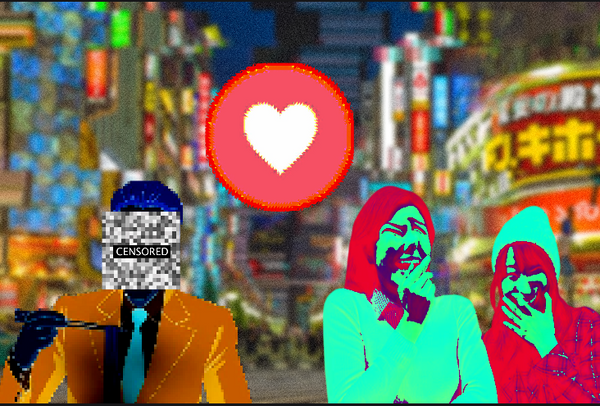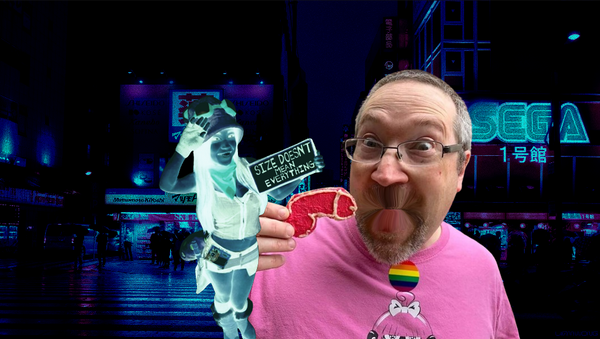The History Of Traditional Japanese Clothing
Let’s start with the origins of Japanese clothing and work our way to today’s trending styles you’ll find on the streets of Tokyo. With this knowledge, maybe you’ll be able to pick out your own kimono next time you’re in Japan.
Everyone has heard of the kimono, probably even seen one, but do you know where they come from? Did you know they come in dozens of different styles and can have up to 12 pieces?
The rich culture of Japan is woven into their clothing. Both the past and present of Japanese fashion tell the story of a society with deeply rooted traditions that nevertheless continues to innovate, create and lead the world. Take a look at Japanese clothing through the ages to see what has changed since the ancient beginnings of the nation—and what’s stayed the same.

Origins — Jomon Period (300 BC)
An amazing thing about Japan is that many of its cultural foundations can be traced back millennia. This is certainly the case with clothing. It was sometime in the Jomon period, before Japanese civilization had really even developed.
During this time, the Japanese were still a loose collection of hunter-gatherer tribes slowly transitioning to sedentary agriculture. Toward the end of this period, their clothing became more elaborate. Agriculture gave them civilization and more time to focus on culture. It was around the end of the Jomon Period as it transitioned into the Kofun Period that the kimono, perhaps the most famous item of Japanese clothing, was born.

Nara Period (710 AD)
What we in the West usually think of as traditional Japanese culture developed in the Nara Period, beginning around 710 AD. The Emperor moved the capital to Nara, and the country expanded culturally and socially. Perhaps most significantly, Japan began trading extensively with China, which brought with it high culture and fashion.
It was during the Nara Period that dress began to reflect class and social status. Specifically, the more of your body that you covered, the higher your status. This especially applied to women who draped themselves in long, flowing kimono robes that covered them from shoulder to toe and usually had sleeves that would reach past the fingertips.
This provided them with privacy and safety from the speculative looks of others, whether the lower classes or rivals within their own class.
This idea of hiding the body eventually began to take on a religious significance as well. In addition to signaling social status and granting privacy in public, clothing protected from the evil spirits common in the Shinto religion. Naturally, the upper class was thought to deserve more protection than the lower classes who performed manual labor.
Through international trade, Japanese clothing also finally reached the world stage during the Nara Period. The West got their first glimpses of kimono and developed the stereotypes we think of when we consider Japanese dress.

The Edo Period and Sokaku (1603 AD)
During the Edo Period, the Tokugawa shogunate came to power. They cut off foreign trade and instituted a policy of sakoku, or total isolation. The purpose was to prevent encroaching Western influence and stabilize the country under one ruler, the shogun. They also eliminated the traditional four-class social system in Japan.
Combined, these things led to a kind of renaissance in Japanese fashion. Without the importation of Western culture and the need to use clothing to signal social class, people got much more creative with the way they dressed.

The Meiji Restoration and Western Influence (1853 AD)
In 1853 an American naval expedition led by Admiral Matthew Perry landed in Tokyo Bay. The Americans forced Japan to open to foreign trade. The Japanese people quickly realized how far behind they were the rest of the world technologically and militarily, and they wanted to catch up. They didn’t want to just become Western colonies like many other nations in Asia, and they wanted to be an important power in the global community.
During the Meiji Restoration, the Japanese removed the Tokugawa shogunate from power and returned authority to the Emperor, who’d previously only had a symbolic role. They devoured Western technological and philosophical discoveries and rapidly developed an industrial economy and advanced military.
Both their economy and military were based on Western ideas, so it’s no surprise that the clothing became very Westernized as well. This was especially true for uniforms. Japan’s new public school system required Western-style uniforms, and the military adopted uniforms and rank insignia similar to the Prussian army, which was famous at the time. For business, men began wearing the Western suit and tie.

Post-World War II
Until World War II, Western-style clothing was mostly limited to uniforms. Private civilians still wore varieties of kimono.
After the end of World War II, the United States occupied Japan. This naturally led to a large amount of Western influence on the culture, especially clothing. American pop culture items like blue jeans and t-shirts came to dominate popular fashion.
Although the Japanese have always taken cultural influences from other nations, be it China in the early days or the West recently, and made them their own, the domestic Japanese fashion scene was minimal through the end of the 20th Century. It wasn’t until the 90s that the fashion industry really exploded and designers began taking the ideas imported from the West and making them truly and uniquely Japanese.

Japanese Clothing Today
Now, in the 21st Century, Japanese clothing can easily be divided into two categories.
Traditional clothing based on Japanese customs dating back millennia is still common. It dominates formal attire, especially for traditional religious ceremonies. Additionally, many elderly people still prefer a traditional dress, and traditional Japanese jobs often require people to wear traditional Japanese clothes. These include athletes like sumo wrestlers and entertainers like geisha and their apprentices.
Traditional Japanese clothing is known for its focus on traditional art. Since Japanese culture and its Shinto religion involves a deep respect for nature, natural symbols like waves and animals are incorporated into designs.
Aside from traditional clothing, people, especially the younger generations, wear Westernized clothing in casual situations and on the street. This doesn’t necessarily mean you’ll see the same outfits in Japan as the US and Europe. Since the 1990s, the Japanese have experimented and created a wide range of unique fashion trends.
Traditional Clothing For Women

Kimono
Kimono is perhaps the most recognizable and most fundamental part of Japanese traditional dress. In fact, the Japanese translation of the word is literally “thing to wear.” They are t-shaped gowns that cover the entire body.
Beyond that, the variations in kimono are endless. Kimono can range from formal to casual and can signal marital status and age. Formality is determined by the number of crests, or kamon, with five being the maximum and most formal. Usually, they have to match the season as well.
Women’s kimono especially are quite complicated. They can consist of 12 or more different pieces and often require assistance to put on. The different types of women’s kimono are too many to list, but to give you an idea of their range of use, here are some common designs:
Yukata: This is a casual kimono worn in the summer. They’re made of cotton and relatively simple. They may resemble a bathrobe and are mainly worn around the house. Traditionally these kimono were white or light blue, but their designs have become more elaborate in recent decades.
Furisode: If you’ve visited a traditional sight in Japan, you may have seen young Japanese women taking photos wearing this type of kimono. They’re decorated in colorful patterns and worn on special occasions by young, unmarried women. Most are antiques past down through generations—or rented—because women don’t wear them often enough to buy a new one.
Iromuji: These are kimono made of dyed silk. They’re never elaborately decorated and usually just one solid color. They’re worn to tea ceremonies.
Mofuku: These are mourning kimono. They are plain black silk and have five kamon to represent formality. After the death of a close family member, a woman might wear her mofuku for several weeks.
Shiromuku: The name literally means “white pure innocence.” These are pure white wedding kimono worn by the bride in a traditional Shinto wedding ceremony.

Obi
Obi are traditional sashes usually used as part of a kimono outfit. Like kimono, women have a much wider range of variations and decorations. They are very colorful and often the most conspicuous part of a young woman’s outfit. There are precise rules regarding an obi’s measurements so as to be in harmony with the rest of the body.

Zori
Zori are an example of Japanese clothing influencing the West. Most people don’t know it, but they were actually the inspiration for American flip flops after American soldiers in Japan brought zori home after World War II.
Zori are flat sandals with a thong that fits between the big toe and the rest. Traditionally they were made of straw, rice or wood, but now they’re commonly made from plastics. Worn with tabi socks that have a divided big toe, zori can be slipped on and off very easily. This is important since the Japanese remove their footwear before entering a house.
Both men and women wear zori, but like most Japanese traditional clothing, the women’s designs tend to be flashier and more elaborate.
Traditional Clothing For Men

Kimono
Men also wear kimono, but they’re much simpler and usually consist of a maximum of five pieces. Unlike the women’s, they also use much subtler colors, mostly black but sometimes dark blue or green. They rarely have decorative designs. The sleeves are also much smaller and less flowing. This allows the wearer to put the obi belt underneath.

Obi
While women’s obi can be up to 30 centimeters wide, men’s are much simpler. The sashes are usually just 10 centimeters wide and lack decoration or fancy styling.

Haori
Haori are very similar to kimono, but they more resemble a jacket than a full robe. Traditionally, these were only worn by men, especially those of the warrior class. They symbolized wealth and status and also served a practical purpose of covering armor.
During the early 19th Century, geisha also began wearing haori. Because they were normally reserved for men, this appeared novel and stylish.
Traditional Clothing For Children

Hifu
A hifu is a type of kimono with a lot of padding. The purpose is to keep children warm. Sometimes they can be sleeveless, especially those used for the Shinto ceremonies for children aged three, five, and seven.

Jinbei
In contrast to hifu, jinbei keep children cool in the summer. They consist of a loose robe-like top that only reaches to the waist.

Westernized Clothing for Women
Japan is very integrated with the global economy, and you can find women wearing the latest trends as they hit the ground in Paris or New York—or Tokyo. Aside from the newest dresses and jackets, though, there are unique clothing styles that have been born in Japan from Western inspiration.
The most notable example is lolita fashion. This is a modern trend based on the Victorian style of 19th Century Europe. The main idea is to look cute, like a young girl from a Victorian novel. Think Alice in Wonderland. Lolita fashion itself has many subgenres, including steampunk, gothic, sailor, and princess, also known as hime.

Westernized Clothing for Men
During the 20th Century, Western-style came to dominate Japanese men’s wear. For business, men wore a European-style suit and tie, which is still the case. Street clothes often consisted of jeans and shirts with sneakers.
Since the 90s, there have been some changes. Often, men’s street clothing combines aspects of traditional Japanese dress with popular Western items. For example, loose, flowing jackets may resemble traditional kimono.
Various Japanese subcultures have also evolved that have their own unique styles. For instance, men interested in the otaku subculture may wear graphic t-shirts from their favorite manga, anime, or video games.
Situational Japanese Clothing

Japanese Winter Clothes
Japanese has a range of climates, but the main islands can get pretty cold in the winter. Tokyo and farther north can be downright frigid until you reach Hokkaido, known for its snowy, icy winters. Traditionally, the Japanese fought off the cold with an article of clothing called a hanten. This was a jacket similar to a haori but stuffed with wadded cotton for insulation.
These days, though, it’s all about practicality. Modern synthetic fabrics are the best at breaking the wind and keeping the body warm. Skiing and other winter sports are very popular in the north of Japan, so expect to see plenty of ski jackets and boots. If you’re traveling yourself, bring extra wool sockets and a scarf. Of course, if you’re going to the sunny beaches of Okinawa, it’s a different story.

Japanese Work Clothes
Since the Meiji Restoration, Japanese business attire has mostly adhered to Western customs. Men wear a suit and tie to the office while women often wear a jacket and a conservative, knee-length skirt.
Industrial work clothes are usually practical, though they may be adopted from the Western version if that’s where the industry first evolved. Agriculture is where you are most likely to still see traditional clothing.

Japanese Wedding and Ceremonial Dress
Traditionally, different kimono are used for different ceremonies. These can be for Shinto or Buddhist rituals or things at home like the tea ceremony. In the case of weddings, the bride wears a shiromuku kimono, which is all white. Japanese brides don’t wear veils, but they do often wear a white hood called a wataboshi.
After the wedding ceremony, the bride changes kimono for the reception. This time it’s a much more colorful outfit with elaborate decorations and pictures. This type of kimono is called an iro-uchikake.
Just like in the West, the grooms aren’t really the star of the show, but they still dress up. Men wear a formal kimono of dark colors called a mon-tsuki. Often, it features family crests. They wear a haori over the kimono and striped trousers called hakama.

Tokyo Street Fashion
Tokyo is one of the world’s most important cities, so it’s natural that it also has a commanding fashion scene. Aside from top designers and the newest trends, there are plenty of street styles that you can find around the city.
An interesting style is ganguro, which is a kind of glam fashion based on man-made accessories like wigs, fake eyelashes and nails, and jewelry like earrings and necklaces. Adherents to this style usually wear platform shoes, bright colors, and miniskirts. Think 80s hair metal.
Kogal is another kind of Tokyo street fashion where people wear the typical high school uniform, but not for school. The plaid skirts are usually shorter, and the socks are looser.
Bōsōzoku is a style popular with men that’s been popularized in Japanese anime and manga. Men with these tastes go shirtless except for an industrial kind of jumpsuit. Over that, they wear a military jacket that usually has writing on it.
Last but not least, don’t forget about lolita. As mentioned before, this fashion involves women dressing up in Victorian-era European clothing. It’s become increasingly popular, especially in the electronics district of Akihabara.

Japanese Military and Police Uniforms
Since the Meiji Restoration at the end of the 19th Century, Japanese uniforms of all kinds have been heavily inspired by their Western counterparts. Japan originally based its Imperial military off the Prussian military, which was the foremost in the world at the time.
After the US occupation at the end of World War II, the Imperial army was disbanded, but Japan created a new military known as the Japanese Defense Forces. While there’s nothing actually stipulating it, uniforms and rank insignia are very similar to those of NATO. The one notable difference is that, rather than stars, rank insignia use cherry blossoms since these are a traditional Japanese symbol.
Like in the West, the police also wear quasi-military uniforms and have quasi-military ranks displayed with similar insignia. The uniforms are normally blue or black and feature brass buttons.

Famous Japanese Fashion Designers
Since the expansion of the Japanese fashion industry in the 90s, Tokyo has become an important city on the global fashion scene along with Paris, London, and New York. Several Japanese designers have become big names and sold their clothing around the world.
For the sake of this article, we'll keep this section short, but if you want the full scoop on fashion designers in Japan, check out our article here.





